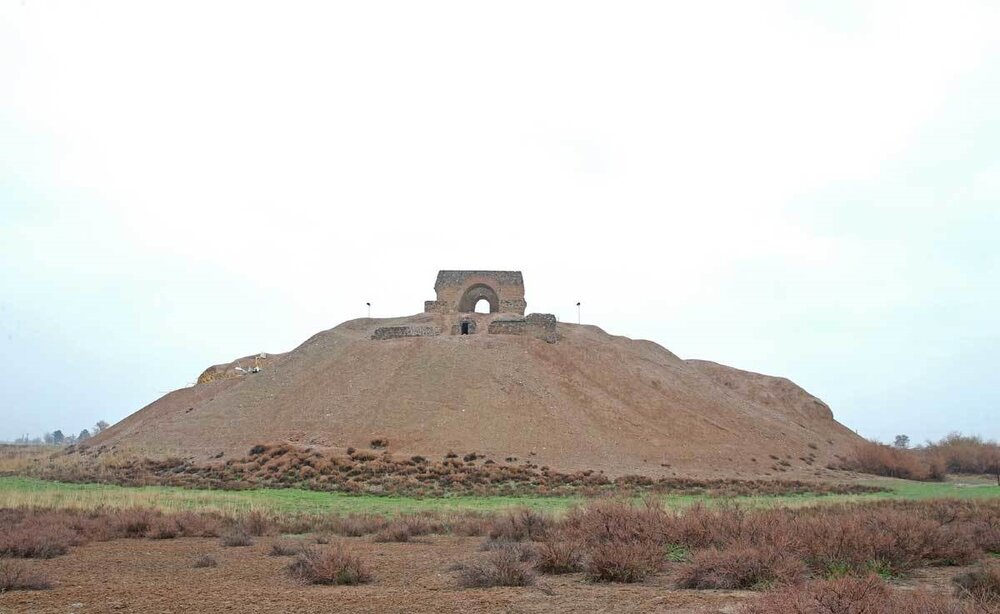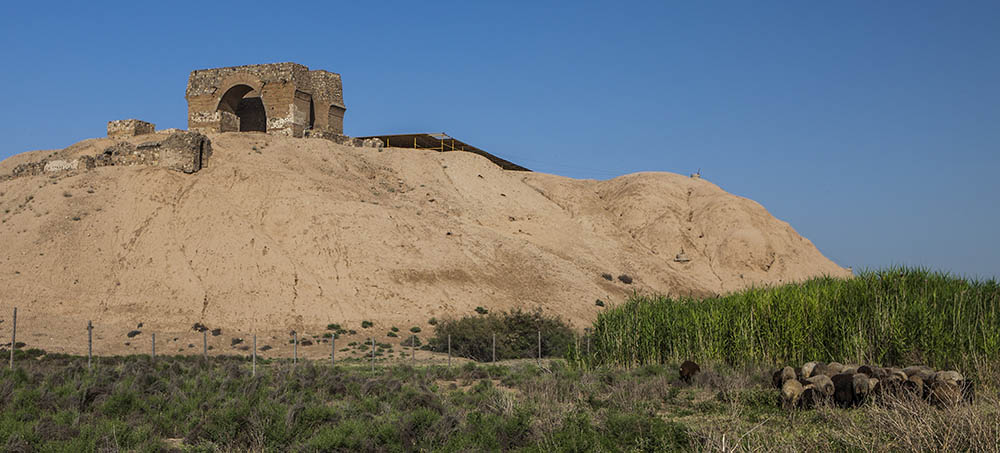The article “Visit Tappeh Mill, one of the most ancient temples in Iran” was published in the Tehran Times on October 30, 2019. The version printed below has been slightly edited from its original version.
Readers further interest in these topics may wish to consult the following resources:
================================================================================
Of buildings that remaining from the early years of civilization, are the ancient temples. Given the importance of religion for mankind, it’s not surprising that these spiritual sites were built using the most advanced and imposing architectural innovations of their time.

Tappeh Mill (Source: Tehran Times).
Tappeh Mill (literally – a mill hill), also known as the Bahram fire temple, is one of the oldest standing Zoroastrian temples in Iran. The monument sits majestically on the hill near Ghal’eh Noe Village not far from the city of Rey, southward of Tehran.
- Some archaeologists say that the temple was built during the Sassanian era (224 to 651 CE), but it is not possible to find out the exact time of its foundation.
There is another opinion that the temple was built even earlier – during the Achaemenid era (550 BCE-330 BCE), and was destroyed during Alexander’s conquest of Persia. That is why it is hard to conclude which Zoroastrian temple is the most ancient in the country.

A photo of Tappeh Mill (Source: Ninara from Helsinki, Finland in Payvand News).
Tappeh Mill is made of brick and mortar (clay, water and egg white). Inside, there is a large hall, divided into three parts. The sacred fireplace burnt in the eastern part of the temple with high vault (iwan) and four round columns. After more than a thousand years, geometrically patterned plaster reliefs, reliefs with floral and animal motifs still can be seen on the walls of the temple. Such a choice of images was dictated by the traditional design of Zoroastrian temples of those times.
Despite the presence of protective structures, the temple was somewhat damaged due to strong winds in 2017 but has now been restored, allowing for the return of tourists.
A Zoroastrian temple is a place to keep sacred fire, which cherished by special Zoroastrian followers wearing white clothes – a sign of their ritual purity. During the reign of the Sassanian Empire, Zoroastrianism became the state religion, as a result of which such temples were built in large numbers across the empire. However, after the advent of Islam, Zoroastrian temples fell into decay.
Zoroastrianism still survives in some areas across Iran such as the city of Yazd. It is also practiced more prosperously in India, where the descendants of Zoroastrian Iranian (Persian) immigrants are known as Parsis, or Parsees.



